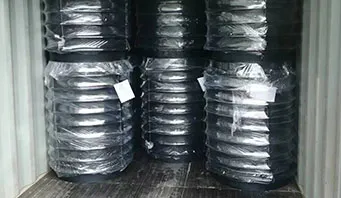
Nov . 16, 2024 05:38 Back to list
what can you burn in a biomass boiler
What Can You Burn in a Biomass Boiler?
Biomass boilers are an increasingly popular choice for sustainable heating, utilizing organic materials as fuel to generate heat or electricity. By burning biomass, we can reduce dependency on fossil fuels, lower carbon emissions, and promote renewable energy sources. But what exactly can you burn in a biomass boiler?
1. Wood Pellets
Wood pellets are one of the most common fuel types used in biomass boilers. These pellets are made from compressed sawdust and wood shavings, making them a clean and efficient option. They burn uniformly and produce a high energy output while generating minimal ash. The consistency in size and moisture levels in wood pellets allows for better combustion efficiency, making them ideal for residential heating systems.
2. Wood Chips
Wood chips are another effective biomass fuel. They are made from larger wood pieces that have been chipped down. While they do require more space for storage than wood pellets, they are often less expensive. Wood chips typically have a higher moisture content than pellets, which means they may require drying before use to achieve efficient combustion. The size and composition of wood chips can vary, impacting the burn quality and energy output.
3. Agricultural Residues
Agricultural waste is an invaluable biomass resource. Leftover materials like straw, corn husks, and rice hulls can be burned in biomass boilers. Utilizing these residues not only reduces waste but also provides an economical fuel option for farmers and agricultural industries. The combustion characteristics of agricultural residues can differ widely, which may require adjustments in boiler settings to optimize performance.
4. Energy Crops
Some crops are specifically grown for energy production and can be used as biomass feedstocks. Examples include switchgrass, miscanthus, and sorghum. These crops are designed to have high biomass yields and low input costs, making them a sustainable choice. Energy crops can be burned directly or processed into pellets or briquettes for efficiency.
what can you burn in a biomass boiler

Certain types of organic waste can also be used in biomass boilers. This includes food waste and yard trimmings. However, burning organic waste may require specialized equipment to handle the variable moisture levels and contaminants often found in this type of fuel. Composting or anaerobic digestion may be preferred in some cases, but for certain biomass systems, organic waste can be a viable fuel source when processed appropriately.
6. Industrial By-products
Many industries produce by-products that can serve as biomass fuel. For example, paper mills may generate bark and wood shavings, while food processing facilities may have leftover biomass such as nut shells or seeds. These by-products can be burned in biomass boilers to generate heat and power, improving overall resource efficiency.
7. Grasses and Legumes
Besides energy crops, other grasses and legumes can be used as biomass fuel. These plants can be grown on marginal lands that are not suitable for food crops, contributing to sustainable agricultural practices. Burning these plants can also help in controlling agricultural pests and weeds, thus integrating waste management with energy production.
Considerations for Biomass Use
When considering what to burn in a biomass boiler, it’s essential to understand the implications of each fuel type. Factors such as moisture content, ash production, and combustion characteristics all play significant roles in the efficiency and effectiveness of a biomass system. Proper fuel preparation and boiler maintenance are crucial to ensuring optimal performance and reducing emissions.
In addition to the type of biomass, local regulations and availability of feedstocks should influence fuel choice. Sustainability practices dictate that biomass should be sourced from responsibly managed resources to ensure that its use does not lead to deforestation or other environmental harm.
Conclusion
Biomass boilers offer a diverse range of fuel options, from wood pellets and chips to agricultural residues and organic waste. As new technologies emerge and awareness of sustainability grows, the use of biomass as a renewable energy source will likely expand. By maximizing the potential of various biomass fuels, we can create a cleaner energy future while fostering environmental responsibility.
-
How to Maintain a Steam Boiler Expert Tips for Efficiency & Longevity
NewsApr.29,2025
-
Professional Steam Boiler Service AB Expert Maintenance & Repair
NewsApr.29,2025
-
Hot Water Steam Boilers Efficient Heating Solutions & Expert Tips
NewsApr.29,2025
-
Hot Water Boiler Capacity Calculation Guide Efficient Design Tips
NewsApr.28,2025
-
How to Drain a Steam Boiler Step-by-Step Safety Guide
NewsApr.28,2025
-
How to Install a Hot Water Boiler Optimal Pressure & Efficiency Guide
NewsApr.28,2025
Related PRODUCTS






















